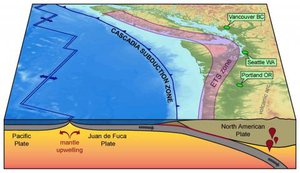Cascadia, comprising the U.S. Pacific Northwest and southwestern British Columbia, is a beautful corner of the planet where spectacular coast mountain scenery borders the temperate Pacific Ocean. But this beauty belies a hidden hazard. The same forces that lift the coast mountains from the sea are responsible for one of the most powerful of natural disasters: earthquakes. In this talk, I will discuss several distinct classes of earthquake that occur in Cascadia and the seismic hazards they pose. This list includes the highly anticipated magnitude 9 "megathrust" event that could rupture the entire Cascadia plate boundary from offshore northern Vancouver Island to northern California. It also includes less predictable "crustal" earthquakes up to magnitude 7.5 that can occur on faults anywhere in the region, and deep "intraslab" earthquakes up to magnitude 7 directly beneath major population centers such as Seattle, Victoria and Vancouver. "Slow earthquakes" with magnitudes of up to 6.5 represent a more recently discovered class of tremor that goes essentially unnoticed by the general public but which occurs at regular ~14 month intervals below Vancouver Island. Although earth motion during slow earthquakes is too protracted to generate significant seismic waves, these events may serve as harbingers for the next megathrust event as they transfer stress updip along the Cascadia plate boundary.


